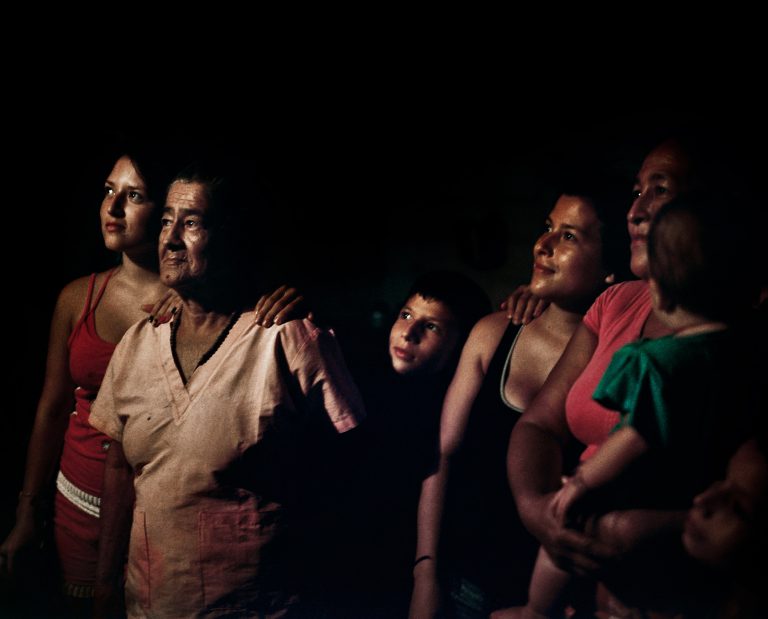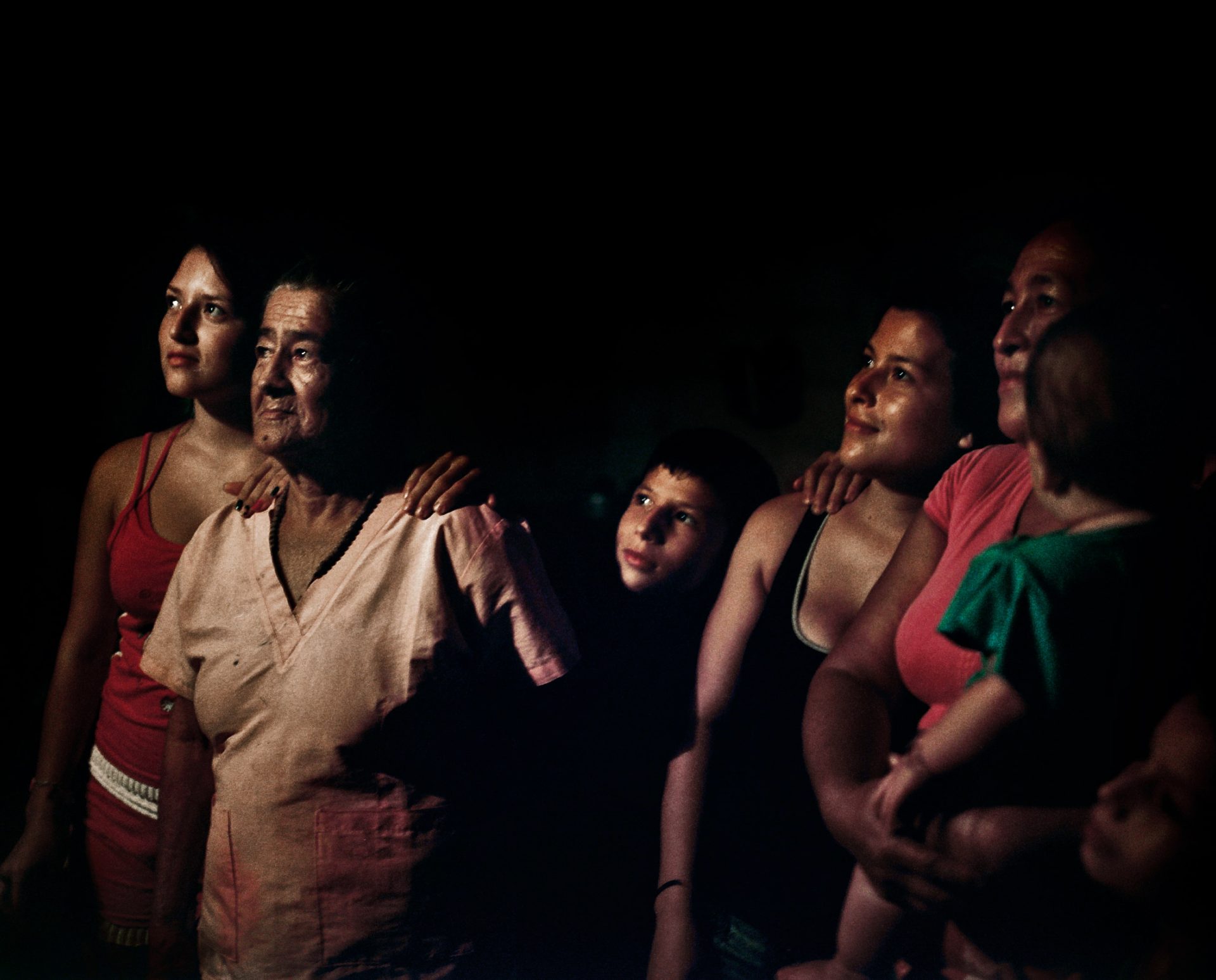
It’s common to read nowadays – in gruesomely illustrated articles – about how the illegal drug industry operates globally. What gets lost amidst this coverage is a consideration for the people in the towns that produce these drugs, the first in a long line of victims affected by its trade.
In A Machete Pelao (Cdf 2022), the Colombian photographer Juan Orrantia documents a town in the Santa Marta Sierra that, in a way, stands in for all these small communities facing a similar fate. The images focus on everyday life, but while these scenes are recognizable, the absence of captions or essays complicates an immediate grasp of the book’s central theme: how the drug trade corrodes all aspects of civil life. Perhaps this calculated opacity insinuates precisely that the sociopolitical structures that allow this abuse on the population are extant but invisible.
Our guides to interpreting the images are a handful of sentences (in Spanish and English) printed on rough green stock. They feel like epitaphs or words spoken quietly out of fear: “Nothing happened here without his permission. Neither coca, war or life”. Another one reads: “He was their protector, the boss. But everything came at a price; betrayal, ambition, and especially favors.” Orrantia gathered these phrases from conversations with the locals or from things he overheard. These snippets of text, along with the lyrics of a narcocorrido (a musical genre that mythologizes criminals) on the back cover, hint at the town’s recent history under the despotic rule of a gang. The story is not explicitly recounted, but the sequence insinuates a state of tension when social dynamics are shaped by fear. However, unlike the songs and tv shows that glamorize the narcos, Orrantia’s visual approach avoids characterizing the town’s inhabitants as helpless victims or reducing them to collateral damage, which becomes a significant political, ethical, and aesthetic gesture.
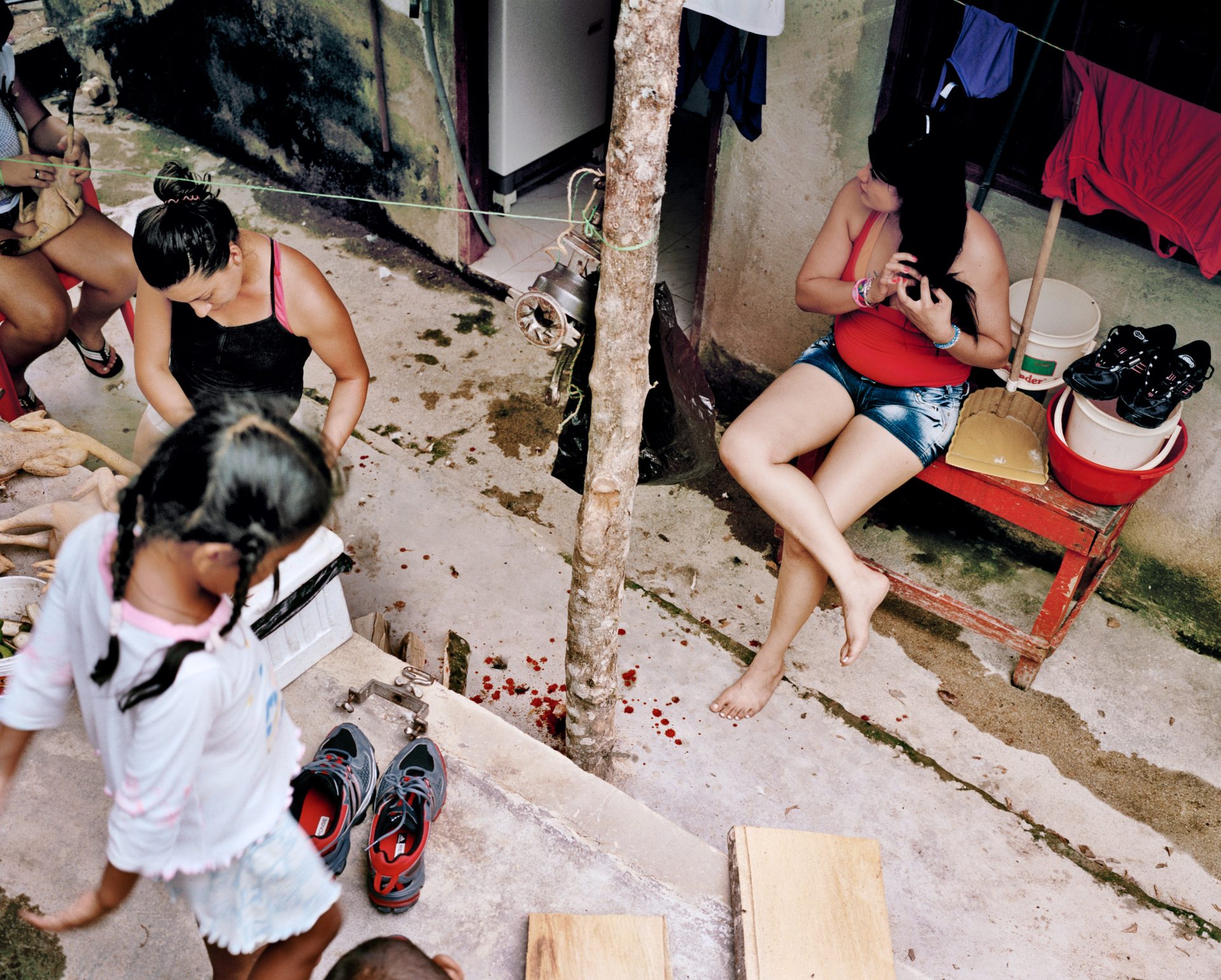
Women play a central role in Orrantia’s narrative. The book is dedicated to those “who saw it all,” but any instance of brutality is only implied, so the sequence must communicate symbolically the challenge of living under the threat of violence. For example, a girl bathing in a river might recall a South American Ophelia, although the longer one looks, the more the comparison appears mismatched. Unlike Millais’ elegiac painting, the photograph captures the energy we experience when the coldness of the water makes us feel alive. Her flowy crimson dress, not her closed eyes, functions as a palimpsest of worrying concepts: youth is the lifeblood of any society, but in Colombia, vulnerable bodies are even more at risk, preyed upon by men who can pay for their impunity. Who will protect her? When the cartels or the guerrillas are the law, people find ways to survive in whichever way they can.
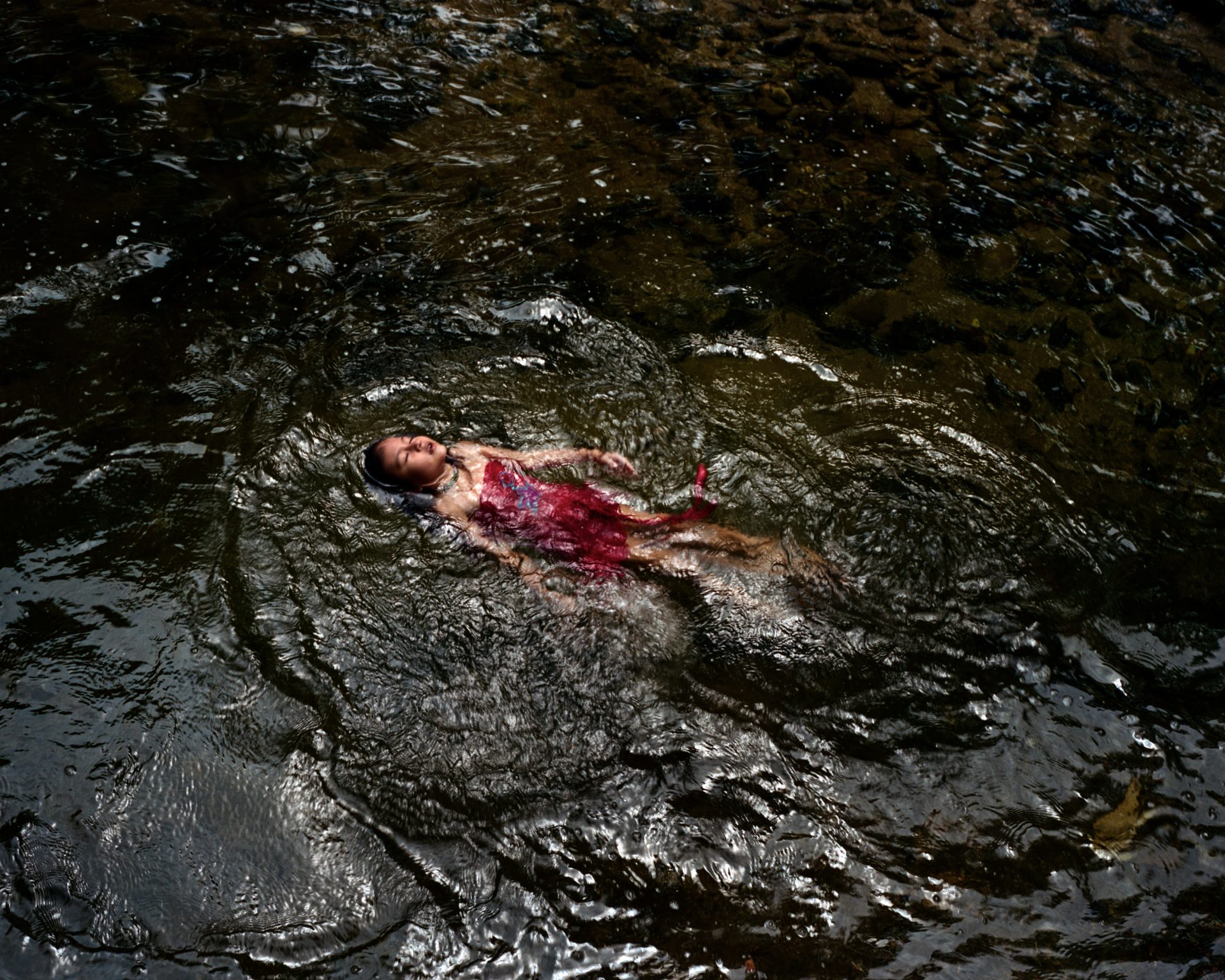
A picture near the end of the book shows another girl, machete in hand, staring defiantly at the camera. Her confidence is unsettling, as it’s impossible to know whether her attitude will save or hurt her. At this point, it becomes crucial to understand that the book’s title refers to the town’s nickname, which translates as an unsheathed machete, implying an ethos of “sleeping with one eye open.”
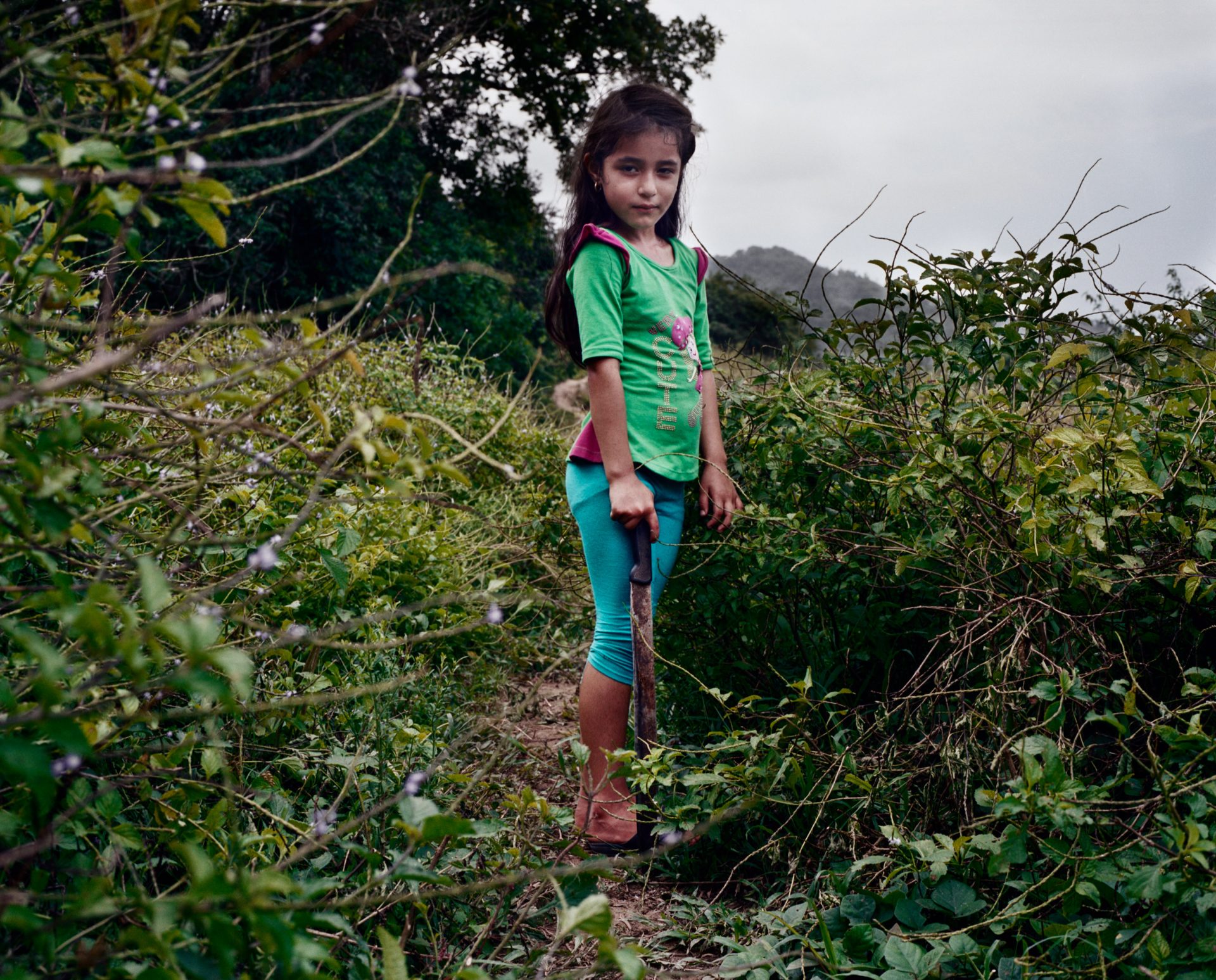
The interpretation of signs is always contingent on cultural values and contexts. A middle-aged woman in a plastic rocking chair with a parakeet on her arm comes across as a matriarch defying the unjust societal structures mentioned earlier. Its subtext, however, can also be read more humorously. In Spanish, the animal’s name is slang for cocaine, while the filthy microwave on the counter conjures images of busted labs, where the appliance invariably appears. Another example of the ambiguity of signs is the picture of a blindfolded donkey, traditionally a symbol of loyalty in Christian Art, but which operates here as a metaphor for how the cartels coerce the population into serfdom.
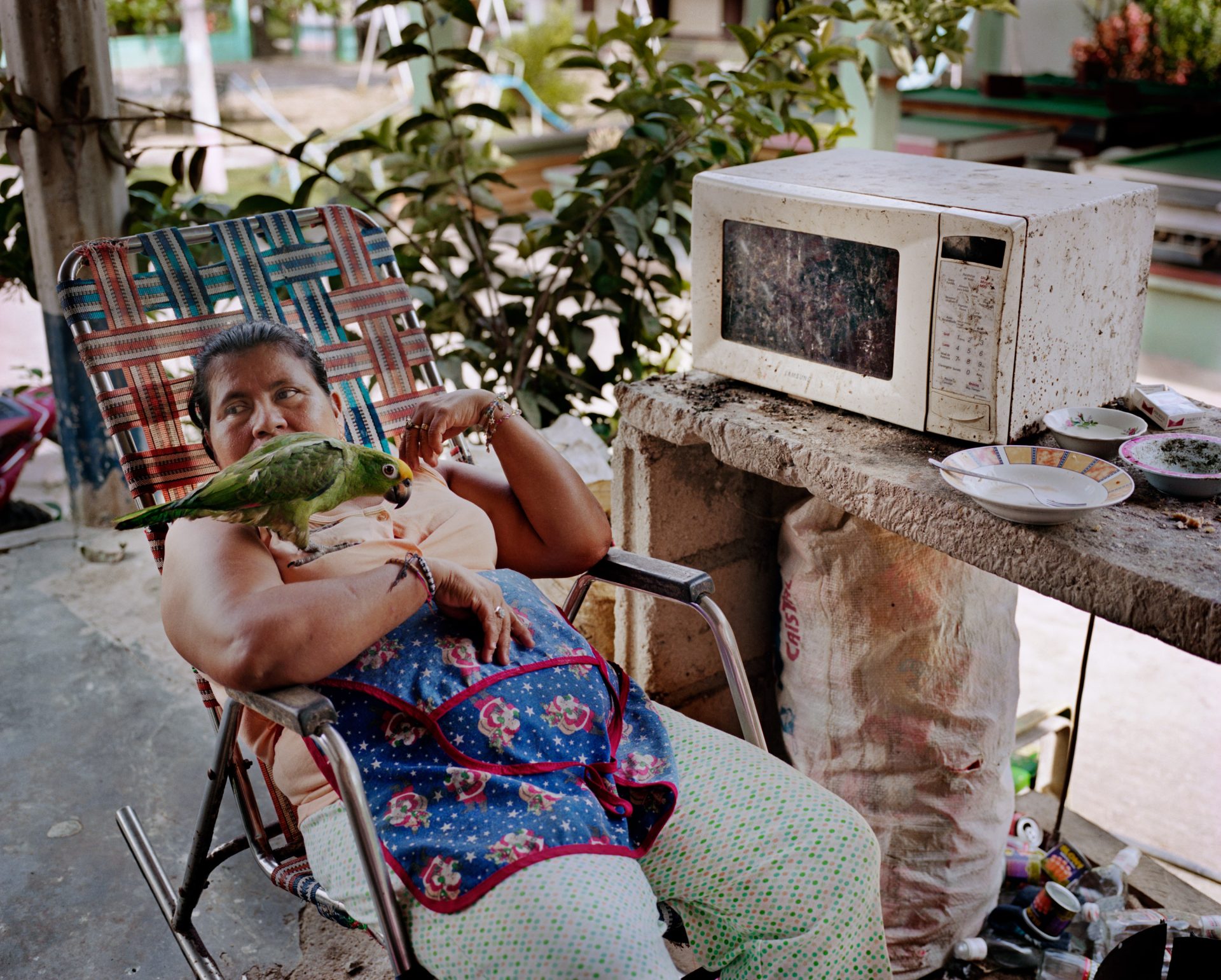
More disorienting is the sets of pictures scattered throughout the sequence, first reproduced straightforwardly and then again in a tighter crop that exposes their half-tone pattern. Figures are digitally composited into the second image of these sets, a tactic that fills in for events Orrantia learned about but couldn’t photograph. In one of these, taken from a high vantage point, a farmer in a red shirt stands pensively in front of a shack. In its second iteration, an armed soldier appears behind him, changing the connotations of the shack’s purpose, which could now be anything from barracks to a makeshift lab, prison, or security house. More than anything, the second picture alters the valence of the farmer’s labor, putting his freedom into doubt.
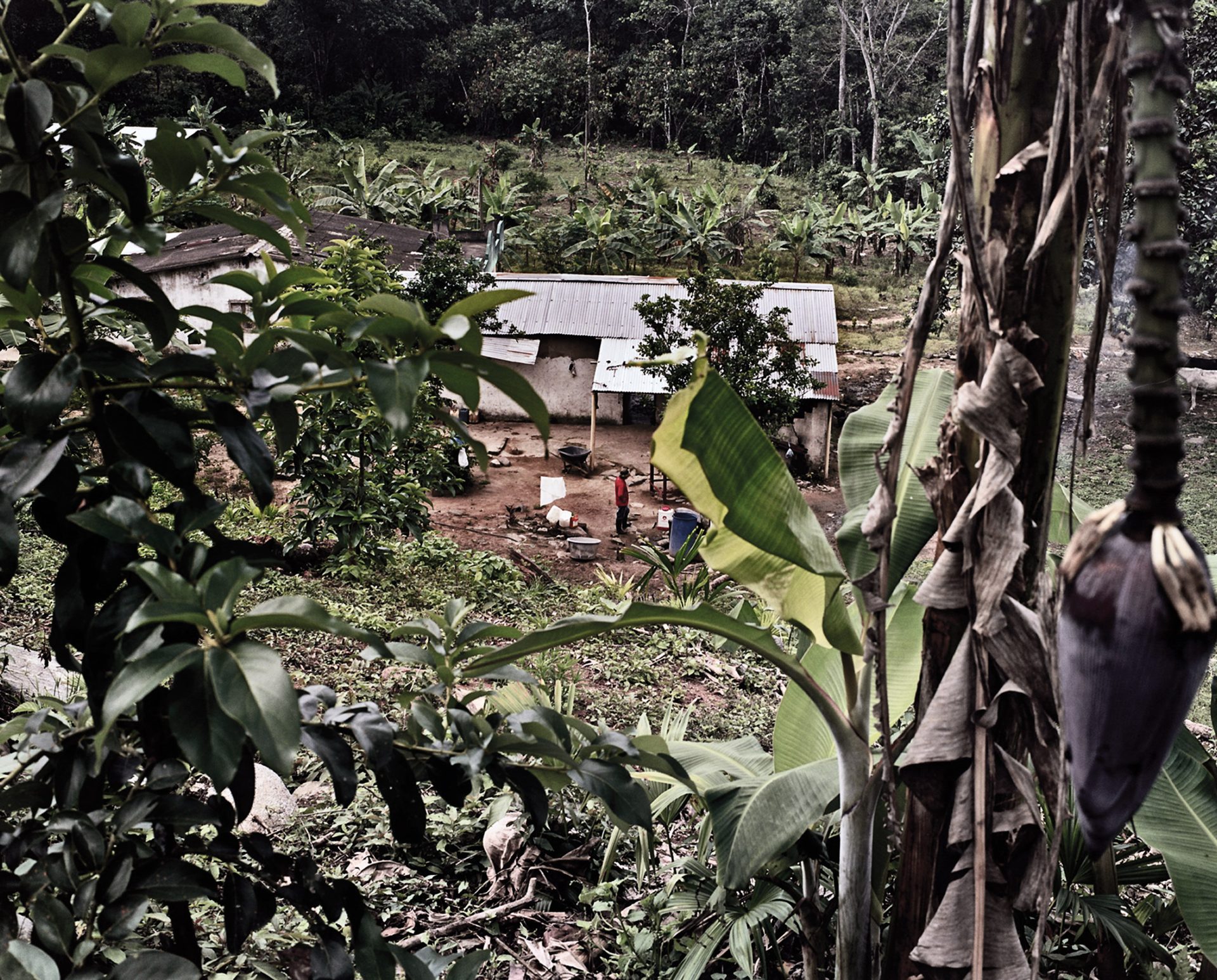
I found a strong connection between A Machete Pelao and Evelio Rosero’s novel The Armies (2007), which narrates a tragic confrontation between the guerrilla, the narcos, the paramilitary, and the military in a similar small town. Everyone loses in this tug of war, especially the inhabitants, who ignore which faction will abuse them next. This kind of territorial violence is implied in a picture of two dogs fighting for a piece of bloody cowhide, although the whole of Orrantia’s images reflects the paradoxical condition of a beautiful region haunted by violence. There’s much to admire in Orrantia’s sensible decision to craft open-ended pictures that demand we exercise our imagination to understand the structural shortfalls behind Colombia’s social instability while also making us feel the collective pain of those trapped in a conflict with no end in sight.
This is part of a series of reviews on Latin American photographers by Arturo Soto. Check out his other articles on Dispatches: The VII Insider Blog:
Messages of Angst and Hope: Notas De Voz Desde Tijuana
The Persuasions of Disobedience: Ana María Lagos
Feeling Out the Past: Graciela Iturbide’s “Heliotropo 37”
Pablo Hare: Sites of Exploitation in Peru
The Possibilities of the Actual: Adriana Lestido’s “Metropolis”
